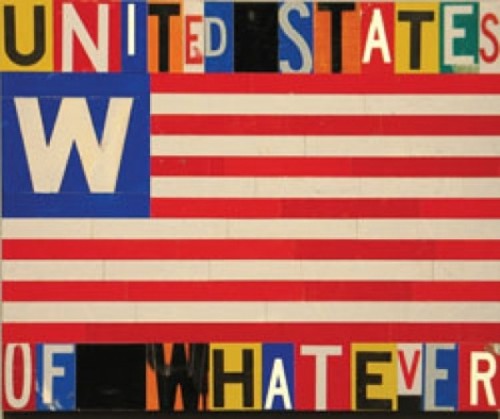Visual Art | The Salt Lake Art Center showcases an ongoing tradition of turning found material into art.
By Brian Staker @stakerizedEdwards gave a lecture Oct. 11 at the U of U Utah Museum of Fine Arts on the exhibit Andy Warhol’s Dream America (running through Jan. 6) and explained his enthusiasm for the artwork of the 1950s and ’60s. “Warhol gave the world too much,” Edwards said. “Too many hypotheses, too many images. Only a maniac would want to absorb them all.”
Edwards made the audience feel the need to absorb them all—from Marilyn Monroe to Mao, and even the famous Campbell’s Soup cans—to see what Warhol saw in iconic figures of pop culture. Edwards didn’t curate the Warhol show but wrote the program notes.
His love of pop-culture influenced art reveals itself in two shows he’s curating concurrently at the Salt Lake Art Center, where he’s been a curator for the past five years. Masters of West Coast Assemblage and Collage includes only five pieces by half a dozen artists, but they represent an elemental, fundamental use of found materials in art, though the practice goes back to early 20th-century Dadaists. “We wanted to honor the original Dumpster divers,” he explains. These Beatnik-influenced artists, he notes, “recycled pop culture in a much more funky style” than Warhol who, in some ways, was more of a formalist.
Assemblage is really just collage in three dimensions, and these pieces travel the spectrum between the two. The oldest work, Wallace Berman’s “Untitled Verifax Collage” from the early 1960s, showed the way for thousands of Xerox artists. Ed and Nancy Kienholz provide perhaps the most arresting image in the array with “Jerry Can Standard Prototype,” a gasoline can with a TV screen embedded in the side, tackling two American addictions with one stroke. The poetic side of assemblage is seen in William Dole’s “Proxy,” constructed of delicate fragments of special bookmaking papers, melding the textural and the textual.
George Herms’ “Clue Two (Dodo Marmarosa series)” collides flat collage work with the third-dimension intrusion of industrial wiring, and the artist affirms the quintessential spirit of all these artists when he says “I pledge allegiance to my imagination.” African-American artist Betye Saar’s “Ragtime,” framed in boxes, makes a statement about racism with historical depictions from the slavery era. Disproving the adage, “If you can remember the ’60s, you weren’t there,” Edwards recalls friendships with these artists in the Bay area. They never achieved the notoriety of Warhol, and Edwards notes, “[Wallace] Berman mailed collages to friends and lived on almost nothing.”
Showing at the Art Center in tandem with the assemblage show is SF Recycled, showcasing work from the artist-in-residence program at San Francisco Recycling and Disposal, of all places. The project actually provides a stipend for artists to create unique works with materials otherwise destined for landfills. These pieces carry on the spirit of the Beatnik contemporaries—whether you call it “funky” or “ironic”—in pieces like Mike Farrugia’s “United States of Whatever,” constructed of wood, acrylic and a generous dose of attitude. There are edges being cut here, and this remarkable triumvirate of exhibits resoundingly concludes Edwards’ residence in the state, as he plans to return to California to work on his own art.
A new direction of art in San Francisco Recycling and Disposal brings this kind of work full circle as Nomi Talisman recycles found family home-movie footage without any alteration, using them much as Warhol used more recognizable faces several generations earlier. Edwards notes that Warhol’s mania lives on: “Like Warhol, these artists are constantly collecting images—raw materials to make art.”
MASTERS OF WEST COAST ASSEMBLAGE AND COLLAGE/SF RECYCLED, Oct. 19-Jan. 26, Salt Lake Art Center, 20 S. West Temple, 328-4201, SLArtCenter.org
More by Brian Staker
-
Live Music Picks: April 12-18
Judas Priest, The Residents, Clownvis Presley, The Breeders and more.
- Apr 11, 2018
-
Loving the Alienation
Helios Creed and Chrome continue making iconoclastic music for outcasts.
- Mar 28, 2018
-
Live Music Picks: March 22-28
U.S. Girls, Ed Schrader’s Music Beat, Hell’s Belles, Columbia Jones and more.
- Mar 21, 2018
- More »
Latest in Arts & Entertainment
Readers also liked…
-
New TV for January 2023
Mayfair Witches, Velma, The Last of Us, Poker Face and more premieres
- Jan 4, 2023



